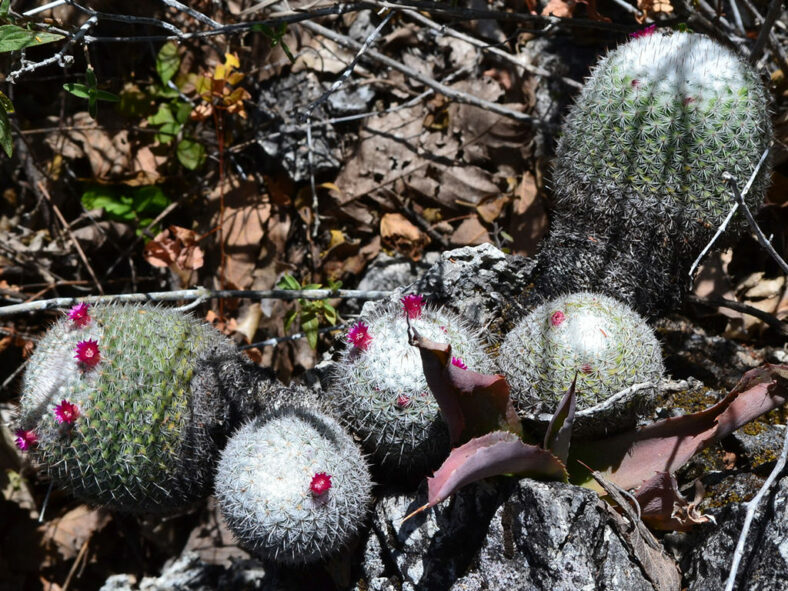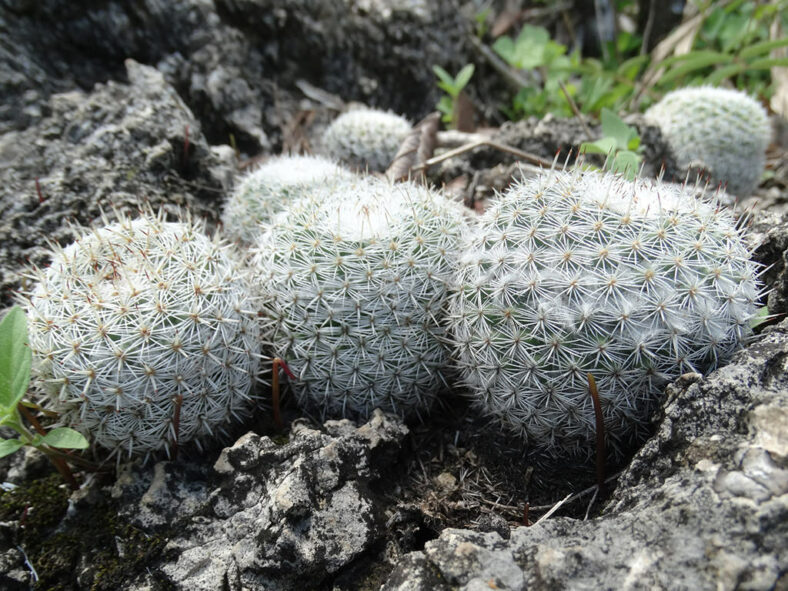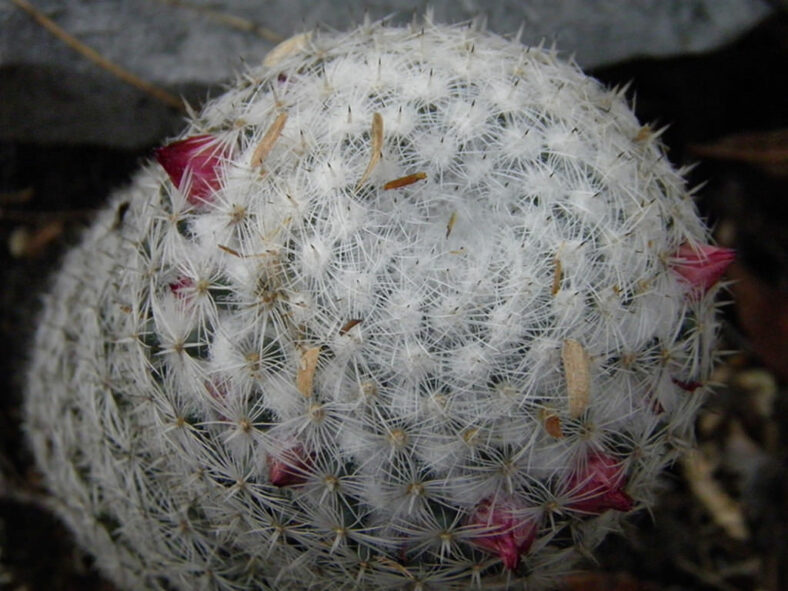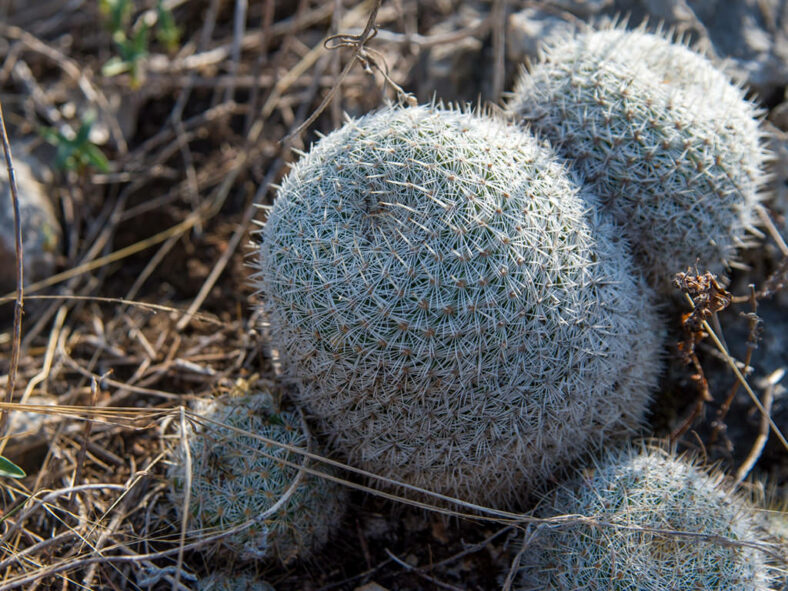Mammillaria albilanata is a beautiful small cactus commonly known as Biznaguita in Spanish. It was first described by Curt Backeberg and published in the German illustrated magazine Kakteenkunde in 1939.
Scientific Name
Mammillaria albilanata Backeb.
Synonym(s)
Mammillaria albilanata subsp. albilanata, Neomammillaria albilanata
Scientific Classification
Family: Cactaceae
Subfamily: Cactoideae
Tribe: Cacteae
Subtribe: Cactinae
Genus: Mammillaria
Etymology
The specific epithet "albilanata" (pronounced al-bee-lah-NAY-tuh) means "white-wooly" and refers to the stems covered with white wool.
Origin
Mammillaria albilanata is native to Mexico. It occurs in Chiapas, Oaxaca, Guerrero, Puebla, and Colima at elevations ranging from 1,640 to 7,220 feet (500 to 2,200 m). The subspecies Mammillaria albilanata subsp. albilanata is only found in Chiapas, Guerrero, Puebla, and Colima at elevations ranging from 1,640 to 6,560 feet (500 to 2,000 m).
Description
Mammillaria albilanata is a small cactus with gray-green stems densely covered with short spines and white wool. It can grow solitary or sometimes branch at the base or from the sides, forming a clump with age. The stems are spherical to short cylindrical with spirally arranged tubercles and can grow up to 6 inches (15 cm) tall and 3.2 inches (8 cm) in diameter. Each areole bears 2 to 4 central spines and 15 to 26 radial spines. The central spines are white to cream-colored and have brownish tips, while the radial spines are chalky white.
During the spring, Mammillaria albilanata produces small flowers forming a ring near the tip of the stem. The flowers can reach a diameter of 0.3 inches (0.7 cm) and range from pink to purple-pink or carmine-pink. The fruits are pink to red, club-shaped, and contain light brown seeds.

How to Grow and Care for Mammillaria albilanata
Light: For optimal growth of your Mammillaria albilanata, ensure it is planted in an area that receives at least four hours of direct sunlight daily. If growing indoors, placing the cactus near a bright window is best to ensure it gets enough light. It is advisable to keep it on the balcony or in the garden from spring to fall for additional light.
Soil: To ensure good root aeration and drainage, use commercial cactus soil or create your own well-draining soil mix.
Temperature: Mammillaria albilanata is heat-tolerant but not cold-hardy. It grows best in USDA Plant Hardiness Zones 9b to 11b, with average minimum winter temperatures ranging from 25°F to 50°F (- 3.9°C to 10°C).
Watering: Water deeply from spring to fall, and wait until the soil dries out before watering again. Never let your pot sit in water, and suspend watering when the plant goes dormant in the winter.
Fertilizing: During the growing season, Mammillaria albilanata benefits from fertilizing. Apply a water-soluble fertilizer for cacti and other succulents. Suspend feeding during the winter when the plant goes dormant.
Repotting: Repot the cactus every 2 or 3 years in a slightly larger pot, preferably during late winter or early spring. However, repotting can be done at any time of the year.
Propagation: There are two easy ways to propagate Mammillaria albilanata: by seeds or by dividing offsets. The best time to remove offsets is in spring and summer. Sow the seeds in late spring or summer for the best results.
Learn more at How to Grow and Care for Mammillaria.
Toxicity of Mammillaria albilanata
Mammillaria albilanata is non-toxic, but it has sharp spines, so keep it out of reach of children and pets.
Links
- Back to genus Mammillaria
- Succupedia: Browse succulents by Scientific Name, Common Name, Genus, Family, USDA Hardiness Zone, Origin, or cacti by Genus
Photo Gallery
Click on a photo to see a larger version.


